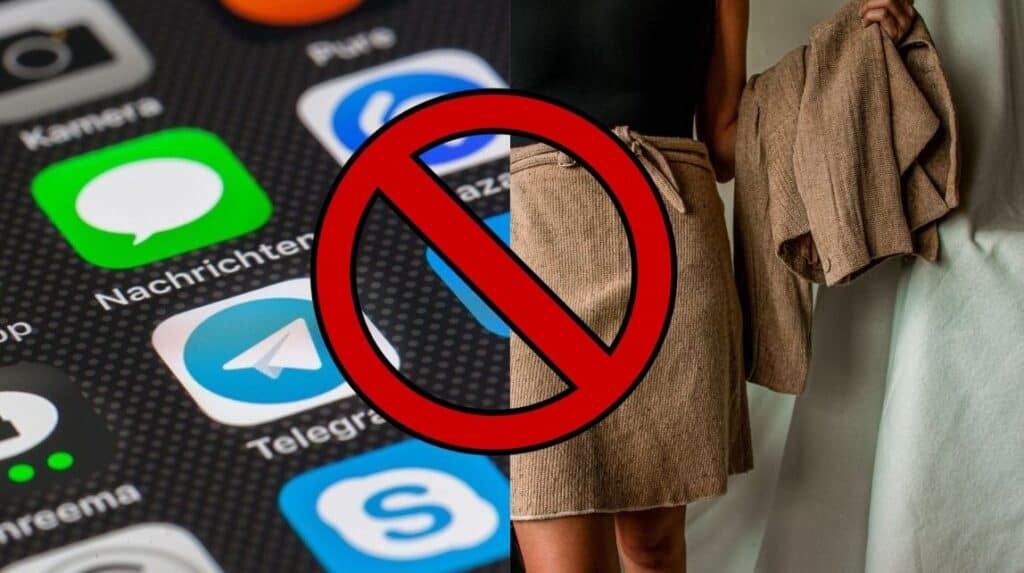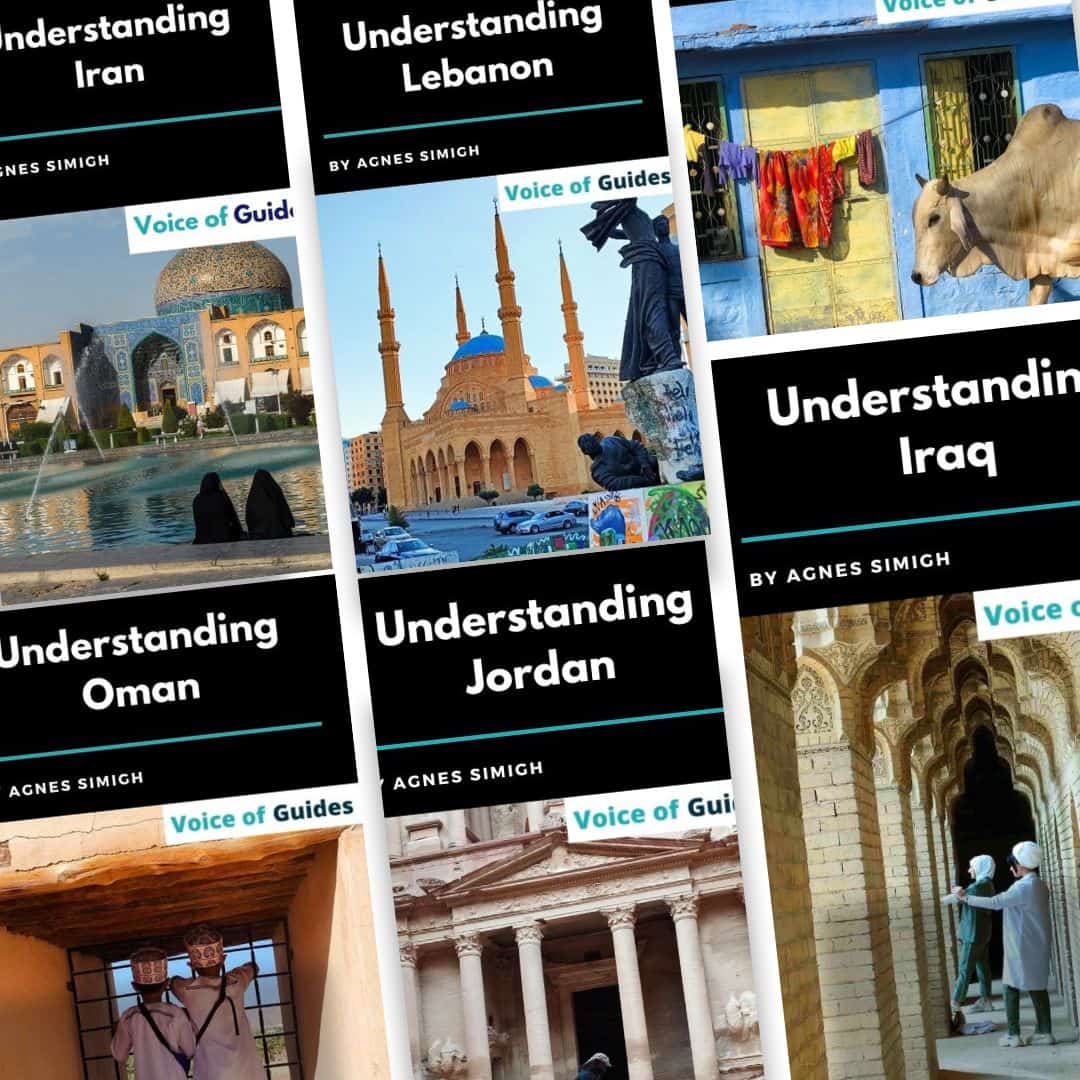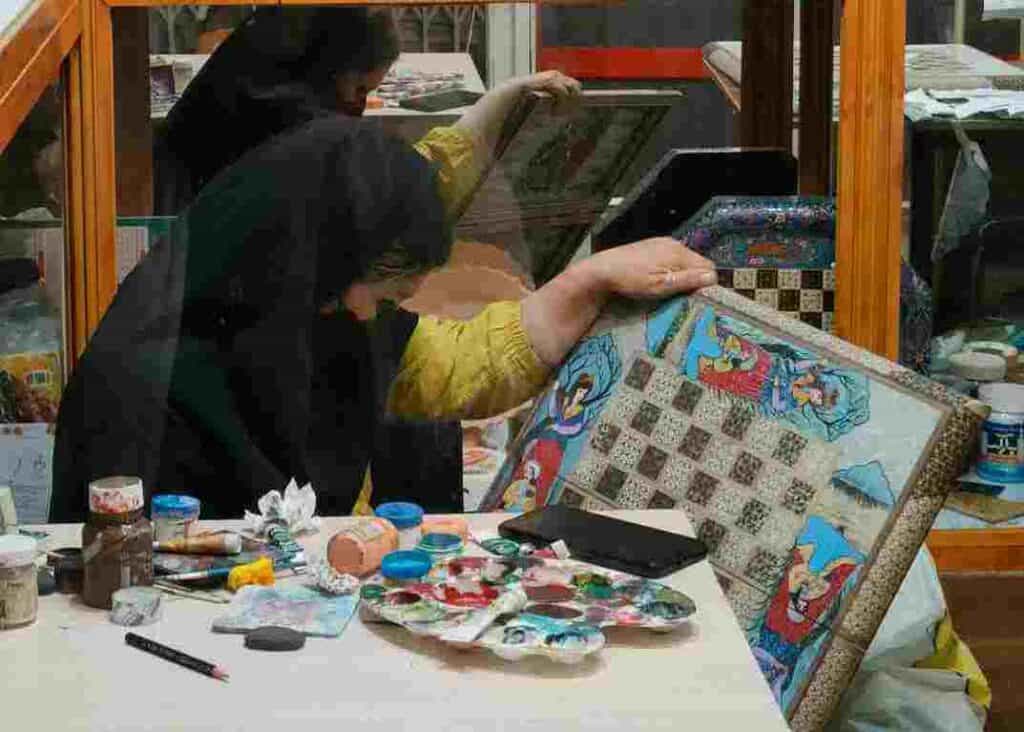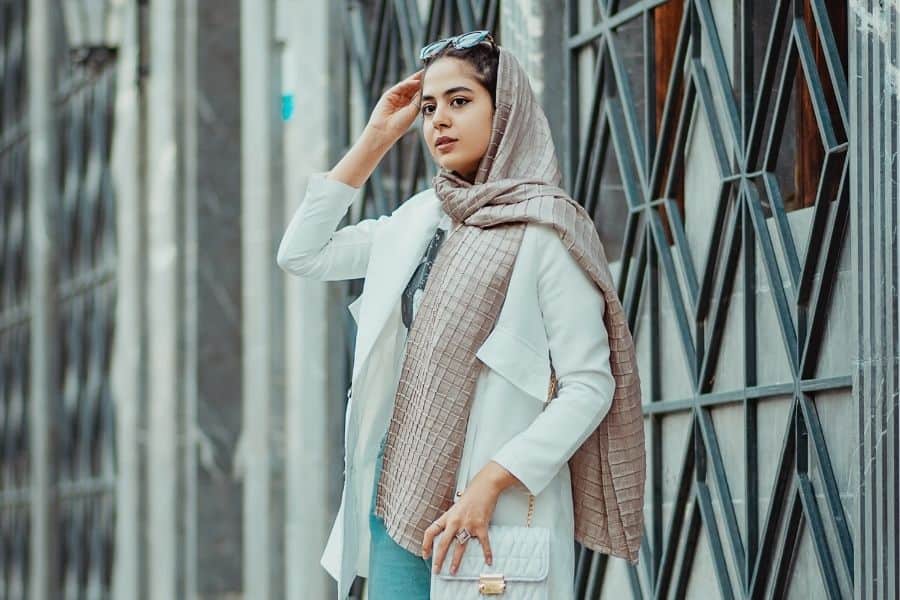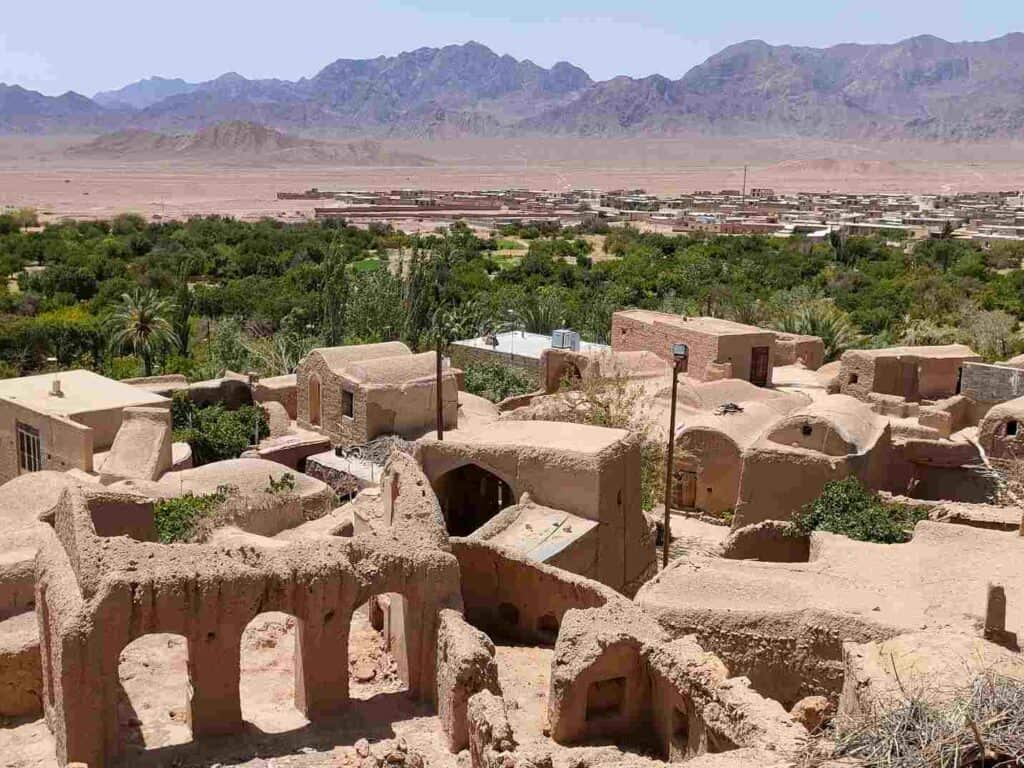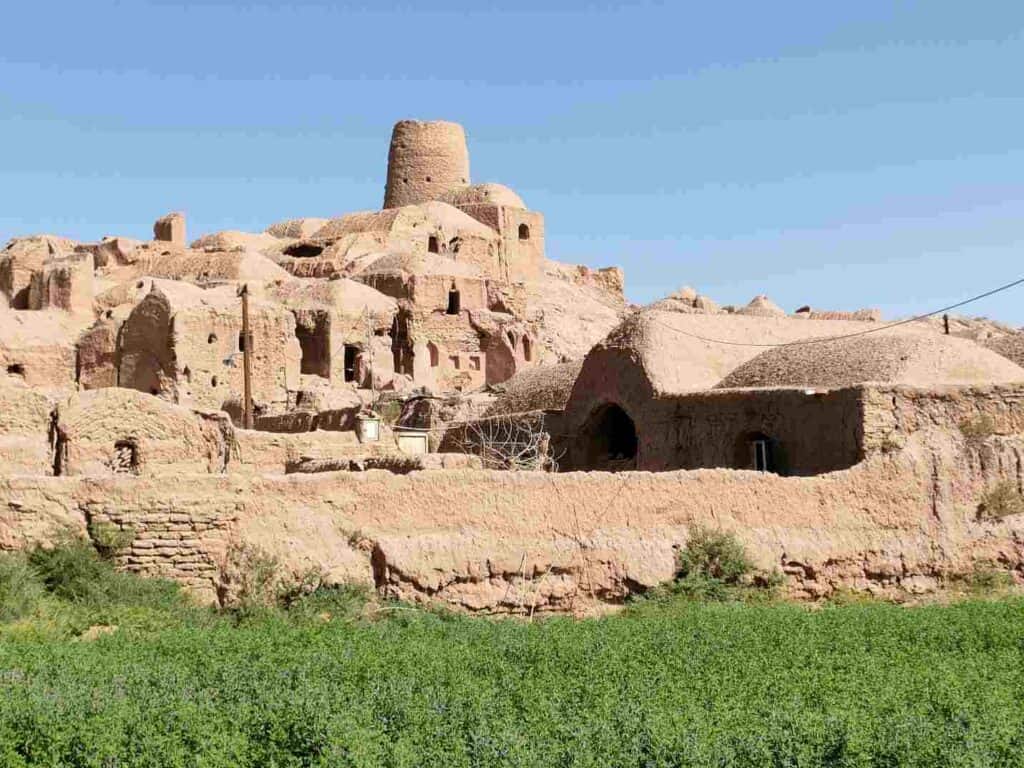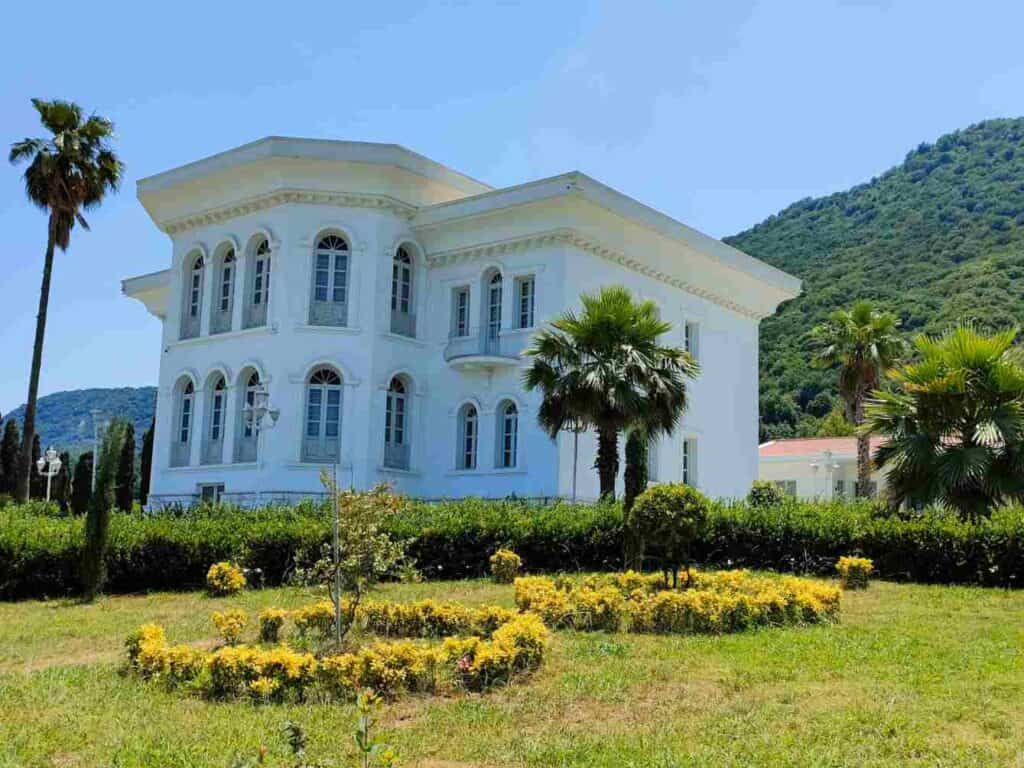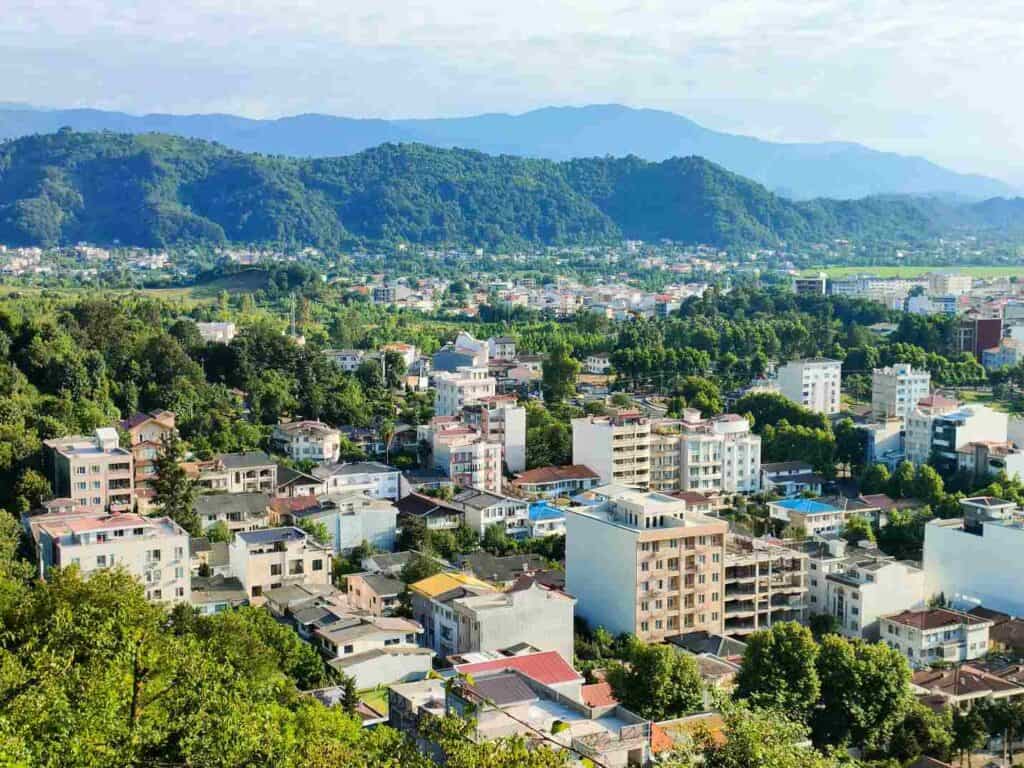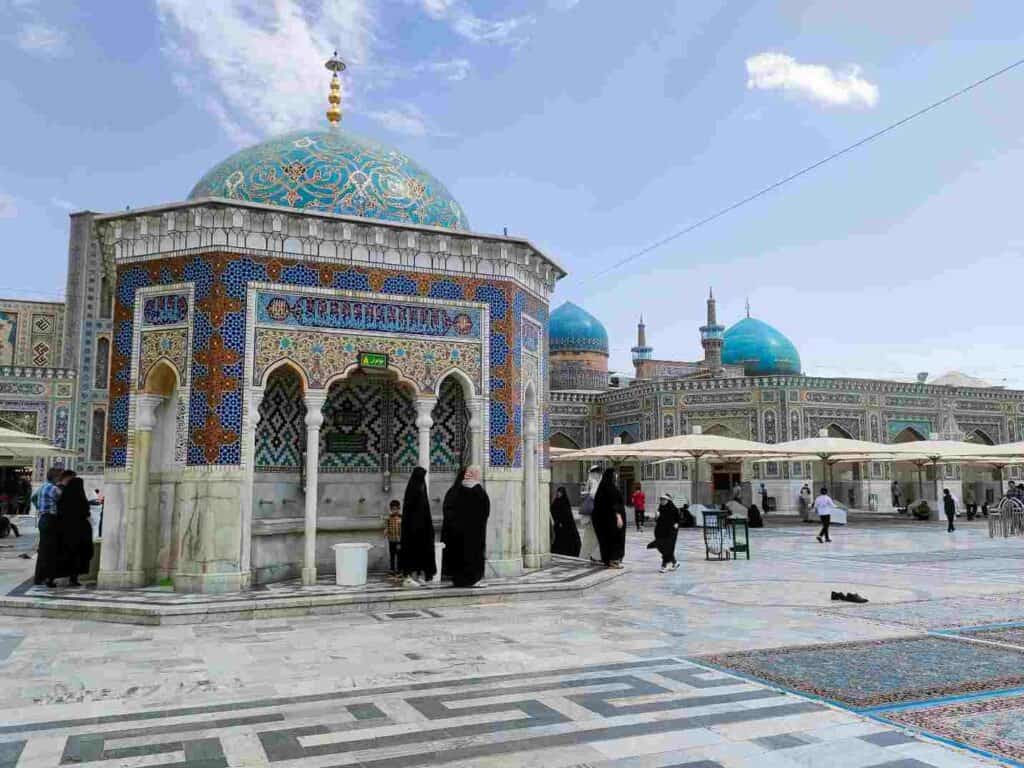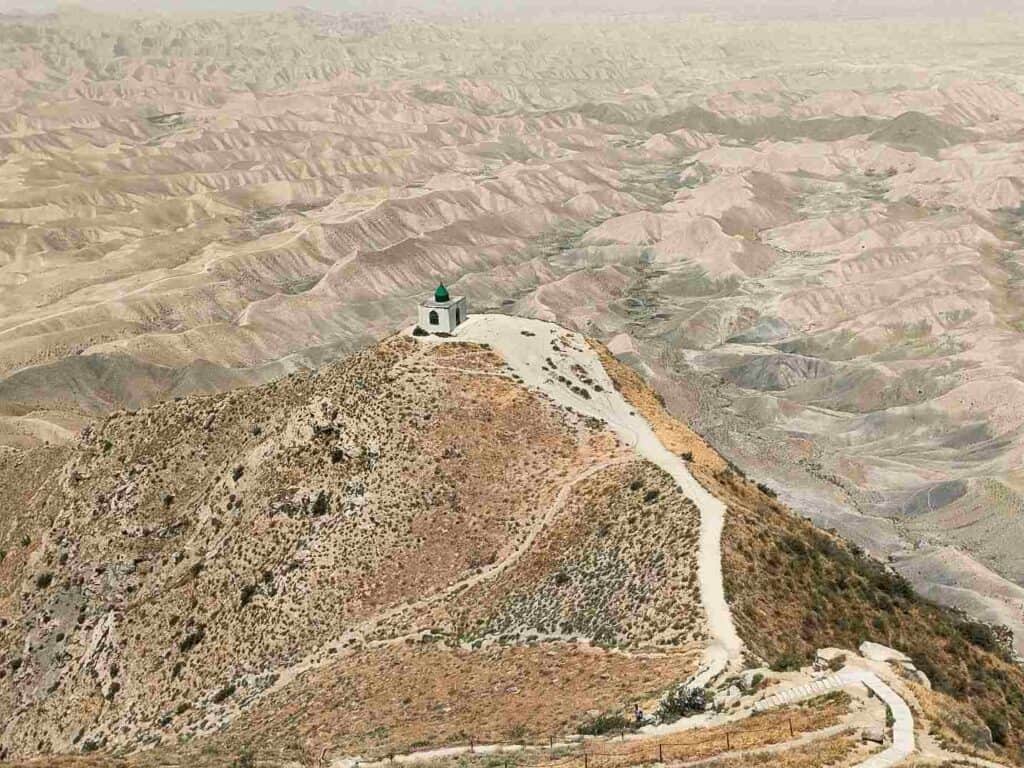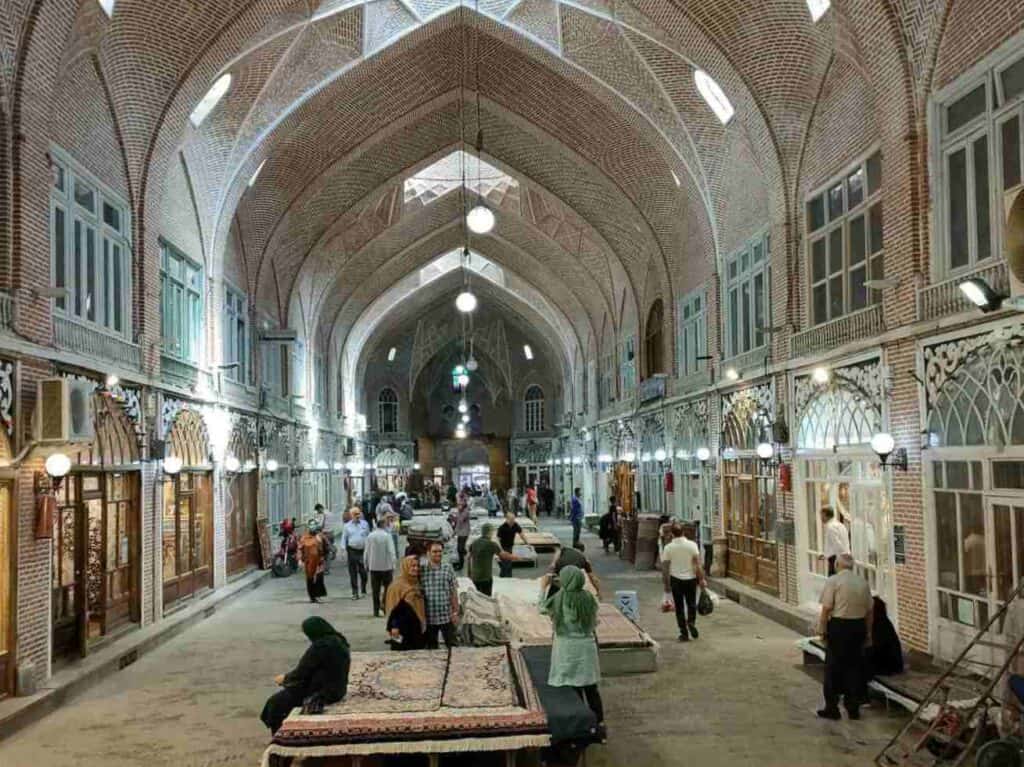Iran is one of the best destinations for tourists in the world. It lies in the Middle East and is entirely safe to visit. But as a country governed by a conservative Islam regime, you need to know what you can and cannot do in Iran, what is illegal, how you should dress, or what you should not just do during your visit. Iran was a liberal country, where miniskirts, singing, and dancing were part of daily life. But everything changed with the Islamic Revolution of 1979. Since then, Iran has pushed strict clothing and behavioral rules on the population and keeps tight control of the use of the Internet and social media.
The best 14-day itinerary for your first visit to Iran
- 1. What social media and websites are banned in Iran?
- 2. If you are a citizen of the USA, UK, or Canada, you cannot travel solo in Iran
- 3. Forget about McDonald’s in Iran
- 4. Women can drive cars in Iran
- 5. Music is legal in Iran, but women cannot dance publicly
- 6. Both women and men can smoke in Iran
- 7. The use of drugs is illegal in Iran
- 8. Men and women relations in Iran
- 9. Can non-heterosexuals travel to Iran?
- 10. Do not give thumbs up in Iran!
- 11. Credit card is not accepted in Iran, bring cash!
- 12. Alcohol, bars, nightclubs, and discos are banned in Iran
- 13. You cannot keep dogs as pets in Iran
- 14. What should you wear in Iran?
- 15. You cannot take a photo of government buildings and sensitive places and do not use a drone
- How to plan your trip to Iran
1. What social media and websites are banned in Iran?
You cannot use the following social media in Iran:
- Viber
- Youtube
- Snapchat
- Tiktok
- Tinder, Badoo, Bumble, Manjam, Hornet (dating apps)
You can use WhatsApp, Instagram, Signal. Telegram is allowed but filtered by the Iranian government. Netflix is also banned.
You cannot get access to the following news websites:
• BBC
• Fox News, CBS News, CNN, NBC
You can get access to France 24, Euronews, Al Jazeera news.
Why some social media and websites are prohibited in Iran?
To restrict people’s access to some websites and social networks is a way for the Islamic Republic of Iran to control the people, especially its opponents. But the reason why a given website and social network is banned is different.
Some sites, mobile applications, and social media were developed by countries hostile to the Iranian regime. The regime blocks these platforms out of fear of targeted propaganda against the Iranian regime. It also wants to prevent that information is collected from inside Iran. That is why the Viber messenger and the Waze application owned by Israeli companies or some news networks like the BBC are banned in Iran.
Popular social networks with many Iranian subscribers (like YouTube, Facebook, Twitter) are also banned. The Iranian regime uses these platforms to get information about its citizens. But when the administrators of the applications refuse to share users’ information, the Iranian regime responds by denying access to the Iranians.
Any websites with pornographic content are also blocked based on Islamic Sharia law.
The fact that many social media and websites are not accessible in Iran does not mean that the Iranians do not have access to them. You will find many Iranians on WhatsApp, Facebook, etc.
Pin it for later!
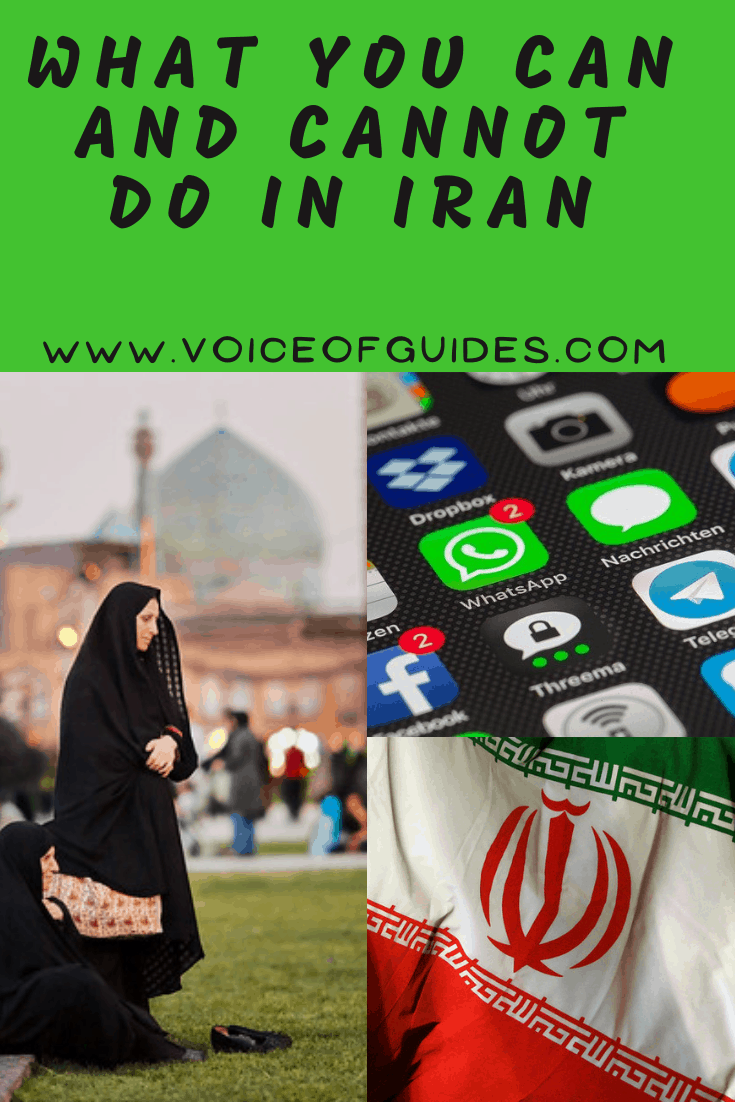
How to get access to blocked websites and social networks in Iran?
The VPN (Virtual Private Network) enables the Iranians to access anything blocked by the regime. Strangely enough, the officials of the Islamic Republic of Iran also use these websites and networks regardless of the legal restrictions they imposed themselves. Foreign tourists can also easily use VPN to access any of these sites and banned social media.
The main problem for foreign tourists is when the host country restricts access to social networks and sites for users located in Iran. The PayPal software and Tinder dating site or some online stores such as Amazon are blocked through the IP address of Iran. VPN does not help you in this case either.
2. If you are a citizen of the USA, UK, or Canada, you cannot travel solo in Iran
If you come from one of these countries, you are still very safe in Iran. Despite the tense relationship with the USA, Iranians are very welcoming to American tourists. They try to prove that the negative image depicted in the media about Iran differs from the reality.
The only restriction for citizens of the three countries is that they must travel with a group. Or when alone than with a tour guide.
3. Forget about McDonald’s in Iran
Some Western tourists tend to search for well-known American fast-food chains wherever they are. If you are one of those tourists, forget about that. Brands, such as McDonald’s, KFC, Burger King, Pizza Hut, Taco Bell, Wendy’s, and Starbucks do not have branches in Iran.
After the Islamic Revolution, all foreign brands left Iran, and due to the economic sanctions imposed by the US on Iran, they never returned.
The restaurant, “Freshway” copied the Subway logo and has established several branches in recent years in Iran.
After the revolution, many fast-food restaurants with names similar to American brands have been introduced, like Star Berger or TFC.
But do not think that fast food in Iran is quick. You have to wait longer for fast food in Iran. Unlike American food, there is no pre-prepared food in Iran. Iranians love eating everything fresh, including sandwiches.
4. Women can drive cars in Iran
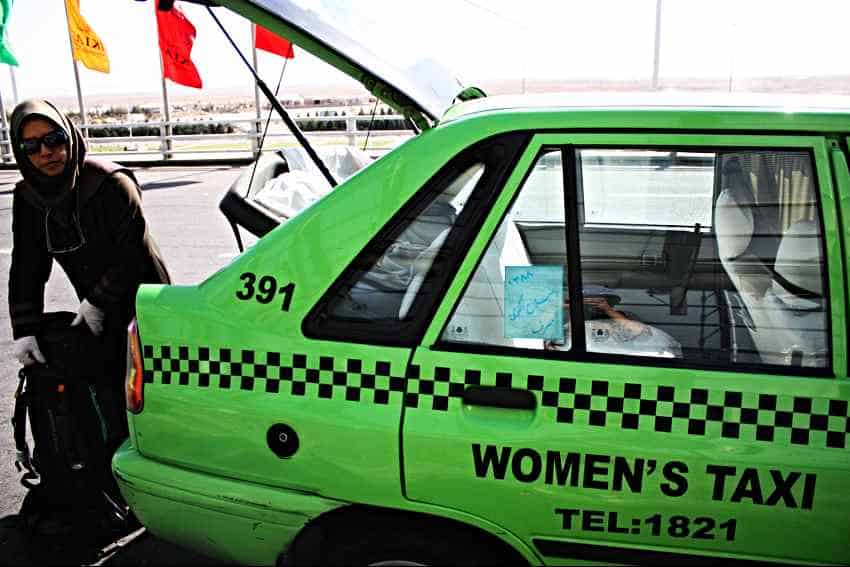
Women are allowed to drive a car without any restrictions in Iran. The first car arrived 120 years ago, but for years there were not many vehicles on the roads. Great changes began with the reign of Reza Shah, the first king of the Pahlavi dynasty. He rapidly modernized the country with the help of the German government at the time. As part of the progress, an increasing number of cars were imported. Reza Shah allowed women to obtain driving licenses and drive independently.
Since then, many women in Iran have obtained driving licenses, and women drivers are common sights on the roads.
Foreign tourists can drive in Iran with an international license. But Iranians are well-known for being one of the craziest drivers in the world. It is often challenging to juggle yourself across the road. Therefore, it is not advisable to rent and drive a car on your own in Iran. Tehran especially has extremely chaotic traffic.
5. Music is legal in Iran, but women cannot dance publicly
Music is legal in Iran. Many artists give concerts or publish music albums every year in Iran, but they have to get permission from the government. This organization verifies that the lyrics do not conflict with Sharia law or any government policy. But female artists face more difficulties. They can only perform for a women audience.
The constant supervisions and strictures push several artists every year to emigrate from Iran. Some local artists illegally record their works and publish them on social networks or the Internet. They are the “underground singers”.
Dancing in public has been prohibited since 1979. Men are not allowed to watch women dancing. Men and women should celebrate weddings and any other events separately. The court can impose a fine or flogging on those who do not comply.
“But many Iranians ignore these laws. At a wedding or birthday party we dance together in private gardens or ceremonial halls or our own homes, regardless of Sharia law.” – said my friend from Iran.
The country was modernized and adopted Western culture during the Pahlavi period (1925-1979). Iranian ballet dance and contemporary dance inspired by Iranian music and stories appeared at that time as well. But the 1979 Islamic Revolution swept away all the efforts to reconstruct and keep the traditional Iranian dances alive.
All that is strange because dancing is deeply rooted in Iranian culture. Dance in Iran is as old as the history of the land. Every tribe and region has its dance and music. Group dances or line dances are famous among the Lor, Kurd, Azeri, and Arab tribes of southern Iran. Group dances enhance the collective spirit and ensure greater unity among the tribes.
Traditionally, both women and men participated in Kurdish group dances. But only men performed dances by the Lor, Azeri and Arab tribes. Kurdish tribes link dancing with their religious rites until today. A clear example of this is the Pir-e Shaliar ceremony in Iranian Kurdistan.
The spectacular wood dance (rags-e chubi), when two people hit each other with two sticks while dancing. This dance requires a lot of experience and coordination. Mostly Baluch, Khorasani, Mazani, and Gilak tribes perform it. Originally it was a dance to prepare for war and struggle.
There are also ritual dances among the villagers, such as the rice harvest dance in Gilan.
Some Iranian artists living outside of Iran are trying to spread contemporary Iranian dance. Shahrokh Meshkin Ghalam is a famous Iranian artist who combined contemporary dance and ballet based on historical stories.
As a tourist, you can ask your tour guide to help you see local dances in local communities.
The best 14-day itinerary for your first visit to Iran
6. Both women and men can smoke in Iran
After the age of eighteen, men and women can legally buy cigarettes and smoke publicly. But Iranians smoke less than in the neighboring countries. Most middle-aged and elderly people smoke cigarettes. But it is also common among young people. You can see more and more women smoking in cafés and on the streets.
In recent decades, Hookah (water pipe or Shisha) has become popular among young men and women. In Iranian villages, the use of “chibok” (long tobacco pipe) is common among the elderly.
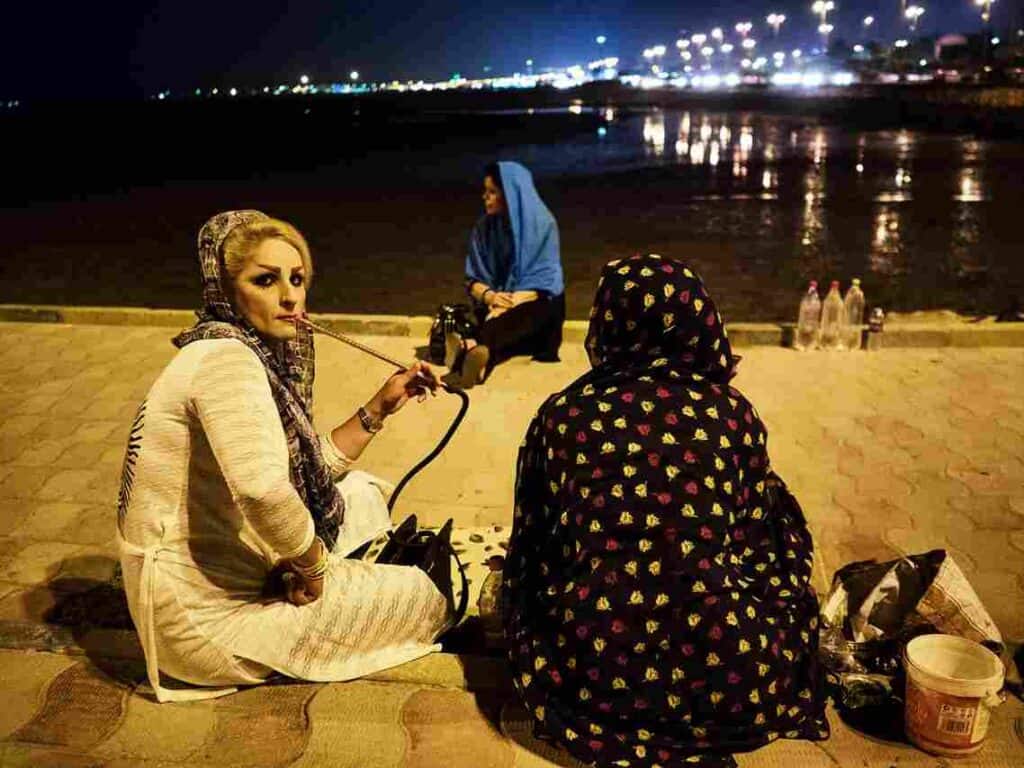
7. The use of drugs is illegal in Iran
The use of any narcotics is illegal in Iran. Unfortunately, because of its geographical location, being on the transit route of narcotics from Afghanistan to the West, narcotics are easily found on the black market. Every year, many people become addicted to drugs. The army and police in Iran make significant efforts to fight drug transit, and unfortunately, several soldiers are killed every year in the fight against illegal drug trafficking.
8. Men and women relations in Iran
8.1 How to approach a woman in Iran as a foreigner?
If a male tourist wants to talk to an Iranian woman, he must get permission from her first. If the woman agrees, they can talk to each other. Young people are usually happy to chat with tourists unless they are women with rigid Islamic attitudes and refrain from any conversation.
It is also better not to shake hands with a woman in Iran. But if an Iranian woman wants to shake hands, then you can return that.
8.2 What is allowed without marriage in Iran?
After the 1979 revolution, Sharia law restricted male-female relationships in Iran.
Men can only kiss or talk with their relatives according to Islamic law. Men can only kiss or shake hands with their mother, sister, niece, grandmother, aunt, and mother-in-law.
Women can only kiss and shake hands with their father, brother, uncle, grandfather, husband, niece, and father-in-law. Any other contact between men and women is prohibited.
In the first two decades after the 1979 revolution, government control was stricter over the youth. But with the new generation daring to confront the rules, the regime had no choice but to mitigate the restrictions over the last two decades. So the atmosphere has become a little freer.
11 reasons why Iran is one of the best travel destinations
You can now occasionally see girls and boys holding hands, talking in the streets and public parks. If a man and a woman want to get to know each other, they can go on a date. It was unimaginable some time ago.
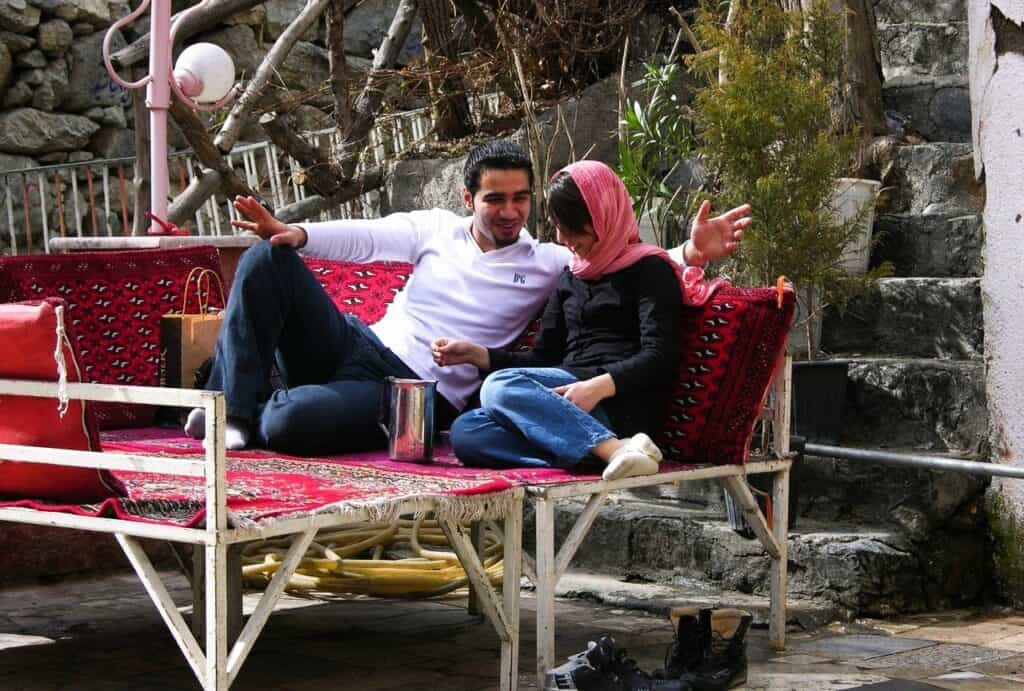
But they are limited to talking. No sexual relationship is allowed. According to Sharia law, the man and the woman can only meet a few times before getting married. After a few meetings, they have to decide what they want. If they do not plan any marriage, they have to stop dating. The relationship as a girlfriend and boyfriend is not allowed.
However, in recent years, young people started to ignore the Sharia laws. They have relationships and are not afraid to show that in public. The moral police will not punish them for talking and walking without being married, only if they kiss and hug in public places.
9. Can non-heterosexuals travel to Iran?
Yes, they can, but should not promote that! The Iranian regime does not care that a foreign tourist is gay if they do not show affection at public places (the same applies to everybody) and do not openly talk about their relationship. Before applying for a visa as a gay or lesbian, it is better to remove the related social media content to avoid further questions.
The Iranian regime is ruthless with gay and lesbian people. If men and women of the same sex get caught while having sexual interaction, both will face a death sentence. It applies to foreigners too. Strangely, transgender people are acknowledged and get financial support from the state for their operation.
Similar to other South-Asian countries, Iranian men walk hand in hand and kiss each other on the face in the street. It is not because they are gays. It is part of the culture.
Many gays and lesbians live in Iran and have to keep their relationships in secret. It is one of the main reasons why gay and lesbian Iranians decide to emigrate.
More information about traveling as gay to Iran: https://nomadicboys.com/gay-iran-tips/
10. Do not give thumbs up in Iran!
Outside Iran, you give thumbs up if you want to sign that something was great or you want to say thanks. Hitchhikers standing by the road also give their thump up as a sign for the cars passing to get them somewhere. But giving thumbs up at someone in Iran is insulting (same as giving the middle finger up in the West). The correct way in Iran is to shake your hand for the passing cars.
11. Credit card is not accepted in Iran, bring cash!
Tourists have to arrive with enough cash in Iran as international bank cards are not accepted (except for a few private stores where the owner has dual citizenship).
Due to severe US sanctions and Iran’s non-compliance with the FATF, the country cannot transfer money to other countries. Iran is one of the few countries where the banks do not have access to the global banking system, only to the domestic banking network. ATMs work only with Iranian debit cards.
You can easily change international currencies such as the US dollar, the Euro, the British pound, the Swiss franc, the Chinese yuan, the Turkish lira, the Canadian dollar, the Australian dollar, and the UAE dirham to the Iranian currency (Rial) in Iran.
Read more about one of the world’s weakest currency, the Iranian Rial.
12. Alcohol, bars, nightclubs, and discos are banned in Iran
Alcohol consumption is strictly prohibited in Iran. It also means that you cannot bring alcohol to the country. It is a minor sacrifice, as Iran quickly becomes one of the favorite destinations for every traveler.
Every year, several people are flogged or arrested for producing, selling or buying, and consuming alcohol.
There were occasional restrictions on the sale or consumption of alcohol before too. But it was never entirely banned until 1979. It is strange because wine is one of the most common topics in Persian literature and history. One of the most famous Iranian wines is the Shiraz. Before the Islamic Revolution, this wine was produced in southern Iran and even exported to other countries.
“Arak” was another popular alcoholic beverage (a little bit like Ouzo) in Iran. The Qazvin Meykadeh Factory has been one of the most famous Arak beverages manufacturers in Iran.
Discos and nightclubs also existed before 1979. Young people went to bars and discos to have fun and drink beer, whiskey, or other alcoholic beverages. The nightlife flourished. But with the change of regime, based on Sharia law, bars, discos, and nightclubs were closed. Alcoholic beverage factories were closed or destroyed and burned by radical Islamic people. It was an opportunity for companies to produce non-alcoholic beverages.
But just because alcoholic beverages are banned, it does not mean that they do not exist. It is available on the black market was created. You can find any brand of alcoholic beverages on the black market. You need to pay more.
The beverages get into Iran through the western borders by land. Smugglers fill empty glasses with homemade drinks and seal them with machines. Or many produce spirits in their homes.
Due to the lack of control over production and distribution, hundreds of people are poisoned every year by drinking non-standard drinks. Many of them even die.
13. You cannot keep dogs as pets in Iran
Since 1979, the law prohibits keeping dogs at home as pets. Normally, you cannot take your dog for a walk on the street or in the park. If your neighbor complains, the police will take your dog away from you and possibly kill it. And you will probably be fined too. Still, several people keep dogs at home. Keeping a cat at home is allowed, but the cat’s fur, feces, and urine are considered impure. That is why a Muslim’s clothes must be free of cat fur or cat urine.
Many people keep cats or birds as pets in their houses.
In Islam, some animals (especially pigs and dogs) are considered “najes”. Najes means unclean. According to Sharia law, keeping such animals as pets in the house is forbidden. For that, keeping a dog is only allowed in a few cases: to guard the garden, to help the shepherd, or to the work for the police.
14. What should you wear in Iran?
Iran is the only country where foreign tourists must follow the same dress code as locals. Otherwise, they can get a fine or can be taken to the police station. In the last case, you can get imprisoned.
Women’s dress codes in Iran
According to Islamic law, women must cover their whole body except:
- The wrists to the fingertips
- The ankles to the toes and
- The face.
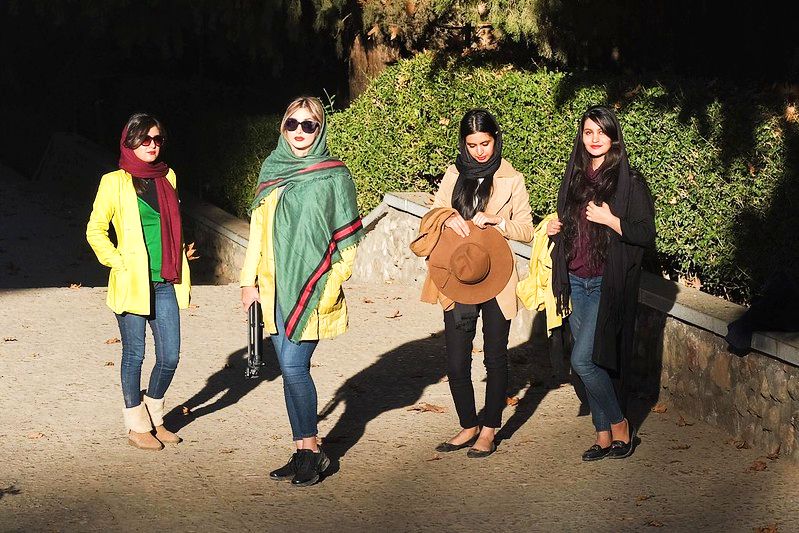
Women should not wear tight dresses. But there is no law about the color and type of clothing.
It seems very difficult to understand what you can wear as a woman in Iran. But when you enter Iran, you will see that most women and girls do not dress according to Islamic law. The “morality police” is also more lenient towards foreign tourists.
Female tourists can wear a long shirt with long pants (jeans or leggings even) and a scarf of any color. You do not have to dress up in black. The shirt must have long sleeves or a little bit above the wrist.
What happens if you do not comply with the Iranian dress code?
The Islamic regime has a special police force to deal with people who do not wear the Islamic hijab. The police warn the offender on the street first. When her clothes do not comply with the Islamic codes, the guidance patrol arrests and takes her to the police station. If she goes to the police station several times, she will have to face the court decision, which can be fine, or imprisonment.
Men’s dress code in Iran
Men wear a T-shirt, or shirt and trousers. It is forbidden to wear a sleeveless T-shirt and short pants. Three-quarter pants are allowed but are not very nice. According to Iranian culture, men should not wear earrings.
In governmental organizations, they cannot wear a tie, bow tie, and earrings. Everybody can wear a suit, but those working for the army and police cannot wear a tie or bow tie. In addition, lawyers cannot wear a tie in Court and doctors in government hospitals.
A man loyal to the Iranian Islamic regime should be unshaved. The tie and freshly shaved face are typically symbols of the hostile system.
15. You cannot take a photo of government buildings and sensitive places and do not use a drone
It is one of the most important things you need to know before you travel to Iran. It is better to avoid using a drone at all, as you may not be aware of what sensitive place you capture an image. The Islamic Republic of Iran is extremely serious about possible threats to national security. Several tourists ended up in jail for taking photos or videos of restricted areas or establishments by mistake. This is something you do have to take seriously.
You cannot drink alcohol during your visit to Iran, and you have to dress modestly and wear a scarf in Iran as a woman. Instead of going to a bar in the evening, you can go to a café, get a Hookah or have a picnic with locals. It may sound a little boring but despite the lack of nightlife in Iran you will have fun, and you will not miss all that.
How to plan your trip to Iran
Book your flight to Iran: I always use Google Flights, Skyscanner or Wayaway to find the cheapest flight tickets worldwide. To get an extra 10% for your Wayaway Membership Plus program use my discount code VOG
Important: Booking.com and other common platforms do not work due to international restrictions in Iran. The only exemption is Skyscanner, where you can book both your international flight and accommodation in Iran!
Book your accommodation in Iran: Hostelworld.com offers a limited number of hostels. All other services are only available through local travel agencies, like 1st Quest.
Get your visa to Iran: 1st Quest or Tap Persia local companies can easily arrange your insurance for Iran
Book domestic flights, hotels, transfers, bus and train tickets, and local tours, all in one place via 1st Quest travel agency.
Another good thing is that by using my discount code, you get an extra 5% off your bookings: VOG%1stQ
Virtual Private Network (VPN): Use VPNExpress, the fastest and best Virtual Private Network to get access to blocked sites in Iran and to prevent hackers from stealing your private information.
Insurance to Iran: 1st Quest or Tap Persia local companies can arrange for you visa to Iran
Book local guides and local tours: Pirsik is specialized in offering tour guides and local tours in less touristic countries, including Iran.

